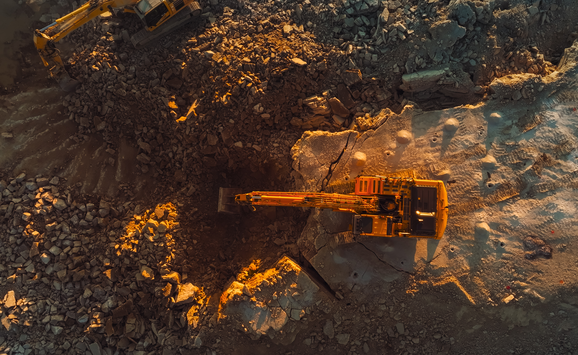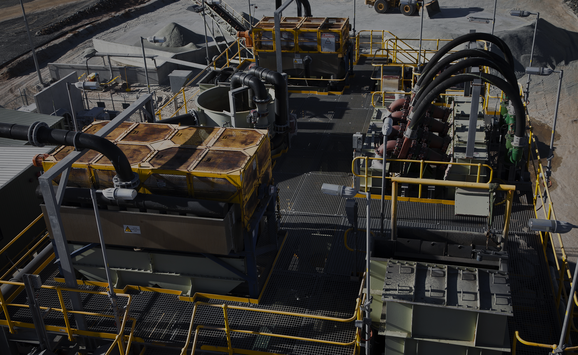As US policymakers work to improve the domestic critical mineral supply chain, three examples show that success may be driven by projects that look financially promising, anticipate environmental and community concerns, and invest in local workforces.
The critical mineral supply chain is global. Some countries specialize in extraction, others in refining and processing. Still others focus on manufacturing technologies—such as batteries and magnets—that consume these raw materials. Today, the United States does not have a strong hold on any link in this supply chain: the nation accounts for only a small share of worldwide extraction, does not process or refine critical minerals in meaningful quantities, and has only recently begun investing in battery and magnet manufacturing. But as critical minerals become increasingly integral to the energy economy, policymakers and industry leaders are looking to boost the position of the United States on the global stage.
Two competing arguments motivate the current interest in expanding the mineral supply chain domestically. One is the desire for US industries to participate in the value chains of clean energy technologies, which are poised to expand under global decarbonization scenarios. The other argument is that the United States is overly dependent on other countries for the supply of minerals and technologies it needs for national defense.
Regardless of the impetus, the success of any policy to expand mineral production and processing depends on several factors, three of which have emerged in our analysis as central to onshoring success: cost-effectiveness, technical know-how, and community support.
Several challenges are associated with meeting the requirements for successful and responsible onshoring under current policy and market conditions. Specifically, it is more expensive to extract and process these materials in the United States than in most other countries due to higher costs for labor, land, and construction. When it comes to technical know-how, the United States generally lacks a trained workforce in this area, as innovation has been concentrated in countries like China for decades. Local communities and Tribes also tend to oppose mining and manufacturing activities due to the mining industry’s history of environmental degradation and lack of meaningful community engagement.
Identifying whether, where, and how to foster US participation in the critical mineral supply chain requires thinking about these three factors and their interactions simultaneously. Policymakers and industry leaders must also consider the combination of federal and state policies that can support opportunities for US-based projects, which can focus on any part of the production process—from raw materials to the final products that the country depends on.
For the US critical minerals supply chain, place matters. The three contributing conditions for success we identify all play out differently for each of the minerals the United States needs. Without considering these conditions, and the challenges that characterize them, bipartisan onshoring efforts will continue to fail to sustain themselves.
Lithium Mining in Thacker Pass, Nevada
In recent years, Lithium Americas, a Canadian mining company, has stated its intention to place North America solidly in the global production supply chain for battery materials. The company developed new processing technology, in collaboration with China-based Ganfeng Lithium, to extract and refine battery-grade lithium carbonate. Lithium Americas plans to deploy this technology at a claystone deposit in Humbolt County, Nevada. If the company meets its production targets, this single project could onshore a substantial portion of US lithium carbonate demand.
However, a 2024 technical report for Lithium Americas indicates that the capital costs for the project, at $77,000 per ton for the first phase of production, are significantly higher than lithium mining projects globally. The venture is competitive from an operational-expenditure standpoint at approximately $6,000 per ton, which falls at the low range of global operating costs.

Thacker Pass, Nevada.
Though costly from a capital-expenditure perspective, the federal and state governments have dedicated considerable support to the project. The federal government provided key financing and renegotiated a US Department of Energy loan to own both a 5 percent equity stake in the company and in the Thacker Pass project, which is a joint venture with General Motors. Nevada has established a statewide initiative to develop a skilled workforce that intends to support not just Thacker Pass, but other companies in the larger “lithium loop” regional economy.
But open-pit mining of lithium-bearing claystone has large environmental impacts, including the need for a significant amount of freshwater to operate. The company estimates that it will need 2,850 acre-feet of water per year in the first phase of the project (lasting 4 years), though this amount rises to 5,200 acre-feet per year in phase 2 (from year 5 to year 40). Thus, for the majority of the mine’s life, it will use about 1.7 billion gallons of water per year, or enough to fill almost 2,600 Olympic swimming pools annually. Local environmental groups are also concerned that heavy metals, chemicals, and other contaminants from the mine’s tailings stack (a large pile of processed mine waste) may seep into the ground water, affecting water quality in the community. Although Lithium Americas expects the stack to discharge zero wastewater into the environment, a report commissioned by Great Basin Resource Watch found that seepage rates would be on the order of tens to thousands of gallons per minute. Additionally, the US Environmental Protection Agency raised concerns during the project’s public comment period (see pages R-179 to R-181) that the backfill of the excavated mine may lead to higher concentrations of antimony—an element highly toxic to humans—in groundwater. The company did not address the concern in its finalized environmental impact statement.
For local Tribes, the lack of free, prior, and informed consent to mine; the limiting of access to culturally significant land; and concerns about environmental degradation have led to significant opposition for the project, including litigation against the company. After getting a key permit approved, the company collaborated with the Fort McDermitt Paiute and Shoshone Tribal Council to develop a community benefits agreement, but other local Tribes remain opposed. Human Rights Watch and the American Civil Liberties Union took up the issue in early 2025, collaborating on a report that finds the United States violated the rights of the Numu/Nuwu and Newe people to access and return to traditional and ancestral land in permitting the Thacker Pass mine.
In short, the company has faced headwinds with high costs and a lack of community support but has nevertheless received significant government support in moving the project forward.
Manufacturing Electric Vehicle Batteries in Green Charter Township, Michigan
Domestic battery manufacturing, which occurs further down the critical minerals supply chain, began to ramp up in response to the Inflation Reduction Act’s clean energy tax credits and electric vehicle subsidies. However, it is 46 percent more expensive to manufacture battery packs in North America than it is in China. This large cost differential is due in part to a lack of domestic manufacturing capabilities for battery components, forcing battery-pack manufacturers to import expensive parts from overseas. The absence of integrated domestic supply chains has contributed to an inability of the United States to economically compete with China in the global battery market.
Against this backdrop, in 2022, a subsidiary of the Chinese battery company Gotion proposed to build an electric vehicle battery component manufacturing plant in the semirural community of Green Charter Township, Michigan. To support the region’s economic development, state leaders made initial investments into a battery production and testing center at a nearby university to train a workforce knowledgeable in the electric automotive industry.

However, the plant immediately faced significant community opposition centered around two issues. First, community members raised concerns around water quality and quantity; the plant was expected to consume a large amount of water, and local communities feared contamination of water sources. Second, although the plant was expected to generate approximately 2,350 jobs, locals grew concerned when rumors started circulating that the university and Gotion had agreed on campus housing for Chinese nationals who would help with local workforce training. The university later clarified that rumors of the university housing Chinese workers were baseless.
More broadly, partnerships with international companies with the technical know-how and skill will likely be needed for projects such as this to effectively launch. However, the 2025 One Big Beautiful Bill Act prevents companies with certain ties to foreign governments from receiving clean energy tax credits and prohibits major Chinese battery manufacturers, including Gotion, from being eligible for the manufacturing tax credit. The project officially came to an end in the fall of 2025. Even though this plant would have helped reduce the costs of domestic battery manufacturing, it ultimately faced both significant community opposition and a lack of federal policy support.
Direct Lithium Extraction in the Smackover Formation, Arkansas
Direct lithium extraction uses pumping techniques to extract lithium from underground, mineral-rich saltwater deposits known as brines. This technology has not been commercialized at scale—given the differences in chemical composition across brine sources, direct lithium extraction must be developed for each location. However, the technique is more efficient and faster at extracting lithium compared to hardrock and evaporative methods, and produces battery-grade lithium with less intensive processing. In the Smackover Formation of Arkansas, a select group of companies are making significant investments in this emerging technology.
On paper, these projects appear promising. For example, the companies hoping to operate in the region have produced feasibility studies that suggest low operational costs. However, the economic feasibility of these projects could be stressed by macroeconomic factors, such as low lithium prices or a high cost of capital, and by the mere fact that the technology is unproven—cost overruns or production delays could easily run down project profitability. Direct lithium extraction companies also promise lower environmental impacts, though some research questions whether this technology will in fact reduce freshwater consumption relative to more traditional lithium extraction approaches.
Importantly, this region has a long history of not just oil and gas extraction, but also bromine extraction. Local communities are accustomed to pumping technologies and chemical extraction, and have been involved in these industries for decades. Further, at least some of the planned direct lithium extraction projects will utilize extant infrastructure from the brine-processing industry that will not require more land to be cleared, minimizing further environmental impacts in the area. Because of this, the community is generally supportive of these efforts. Two workforce training programs, LithiumLearns and LithiumWorks, have been developed with state funding to promote a workforce that is trained and hired locally, further boosting community support for these projects.
In sum, lack of community pushback, state policy–supported workforce development for locals, and low projected operating costs are promising signs for these projects’ success, even under some economic uncertainty.
Creating an Enabling Environment for Onshoring
These three examples illustrate how responsibly ramping up the critical mineral supply chain in the United States requires more than just company-level profitability. Projects will also need to be located in areas where there is support from local communities. As the domestic mining and mineral-processing sector faces workforce challenges, federal and state policy focused on training workers along the supply chain will not only improve project feasibility—it can also bolster community support for projects while helping reduce costs in the long run.
In the Thacker Pass example, high capital costs and community opposition have raised serious concerns and delayed production, even as the federal and state governments move to support the project. In Green Charter Township, the company faced major local opposition, lacked a skilled workforce, and had no federal government support due to the project’s connection with China. On the other hand, direct lithium extraction projects in the Smackover Formation of Arkansas could be cost-effective and move forward with significant community and government support.
When projects look financially promising, companies anticipate environmental and community concerns, and state and federal governments step in to help support a growing workforce, the combination can create an environment for success. However, if one or more of these three dimensions falters, projects can hit a wall, in turn stalling the ability of the United States to be an active participant in the critical minerals supply chain.











